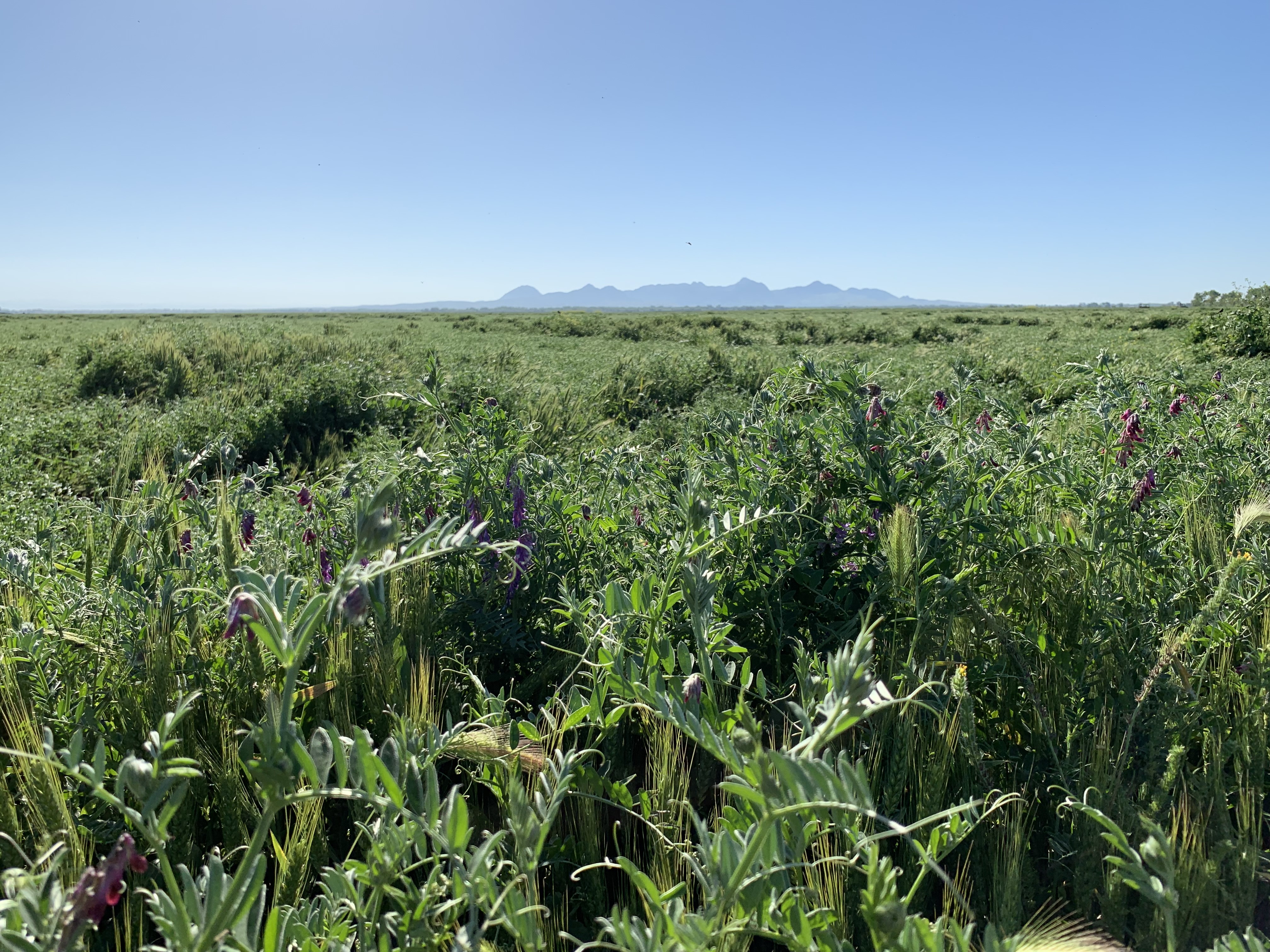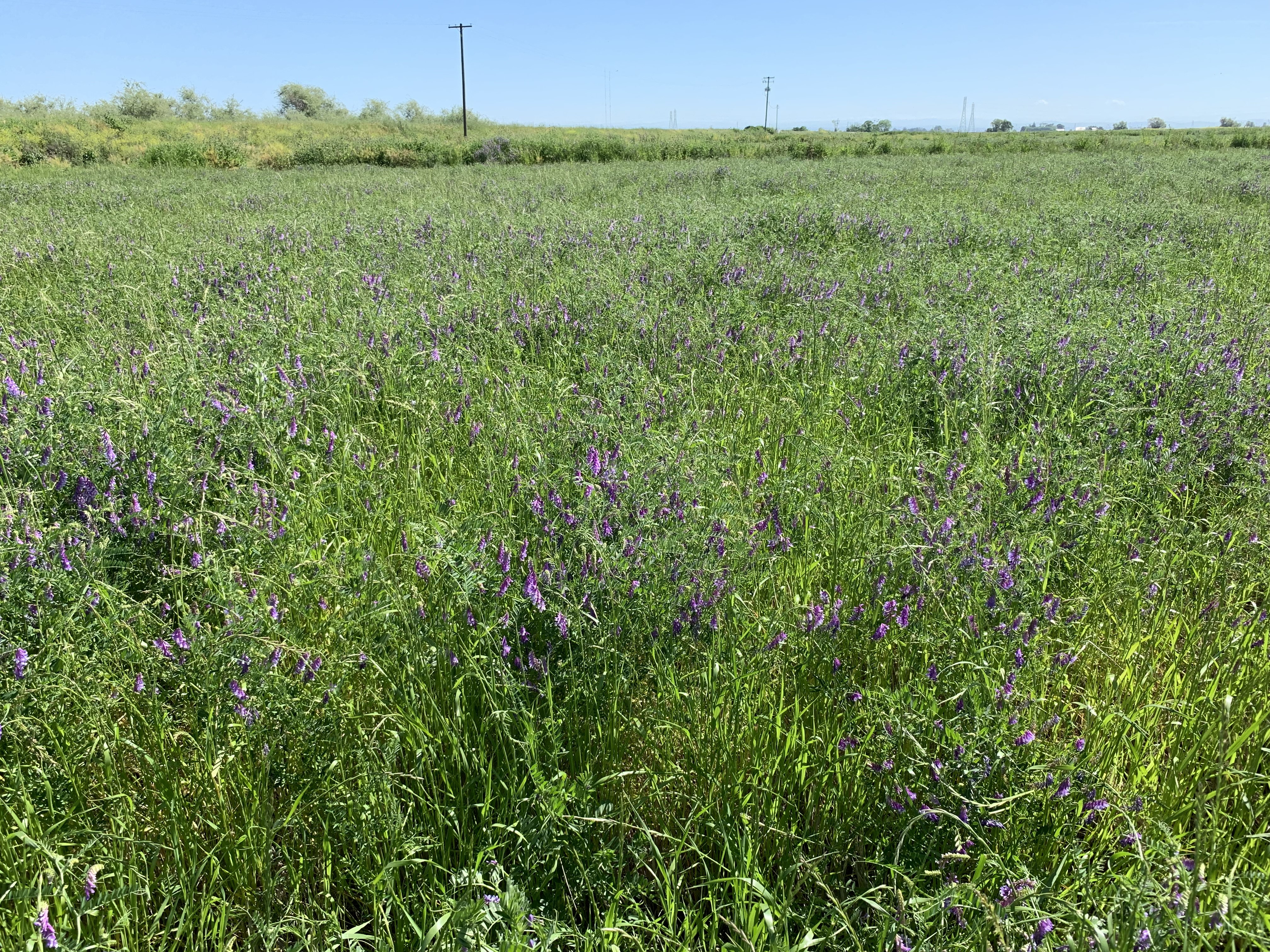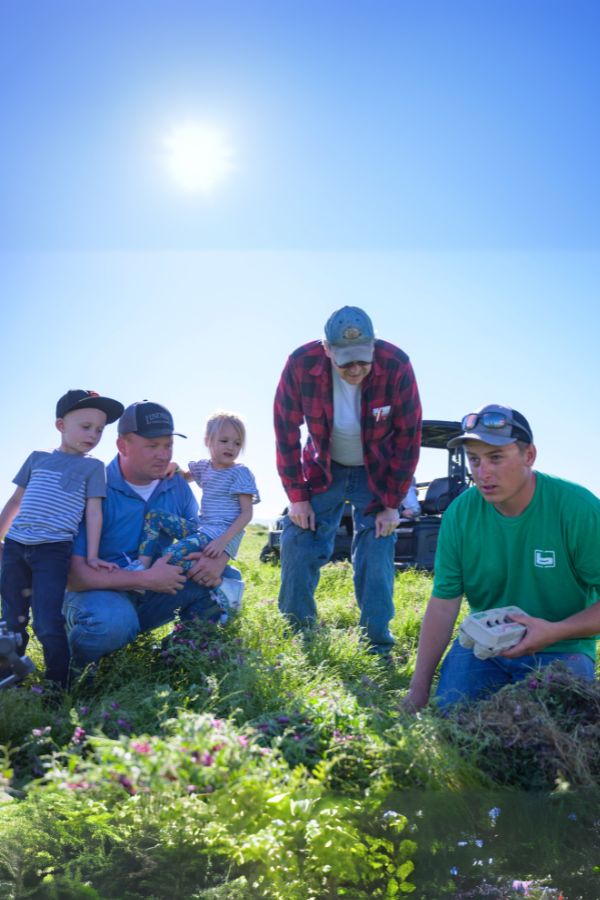Fallow Agriculture
The use of fallow or idle agricultural fields by waterfowl and pheasants for nesting habitat is well documented within California and other states. When vegetative cover is maintained on fallow lands, and there is reliable brood water nearby, nest success has been documented as high as 88%, which is higher than nest success within the Prairie Pothole Region. However, most farmers manage their fallow fields by tilling in the vegetation during the late spring or early summer to reduce water consumption and prevent weed species from setting seed. This practice provides little to no habitat and the timing often coincides with peak nesting for mallards and other local breeding birds.


Cover crops, which can provide an important source of nesting habitat, are not widely utilized in California. However, a study in the Northeastern United States documented that the availability of incentive programs doubled the adoption of cover cropping by farmers in that region. If cover crops and other fallow lands are managed properly, they can be beneficial for upland nesting bird species and ultimately increase the habitat value of fallow farmlands for breeding waterfowl, pheasants, pollinators and other wildlife.
PROGRAM REQUIREMENTS:
This program provides an incentive for farmers that are willing to delay the termination of the vegetation in fallow agricultural fields until July 15th or later. The program is compatible with water transfers and prevented planting insurance. Upon enrollment, landowners must ensure that there will be a reliable water source within ½ mile of the field (i.e., irrigation canals, summer flooded wetlands or planted rice fields) and leave the fallow fields undisturbed until July 15th. Landowners must allow monitoring on all enrolled fields. CWA & U.S. Geological Survey staff will regularly monitor enrolled fields for nesting activity from April 1st to July 15th. Nest searching will be conducted every three weeks and all active nests will be checked once a week.
Incentive Rate and Funding:
-
- There will be $100,000 available for this program in the 2025 nesting season.
- Payment rates will vary based the type of vegetation that is within the fallow fields.
- Fields with volunteer vegetation: $30/acre.
- Fields with established planted cover crops: $110/acre.
- Payments will be made shortly after July 15th if all program requirements are met.
Program Area:
-
- Enrollment for this program is constrained to the Central Valley and the associated planning regions, as designated by the Central Valley Joint Venture.
Eligible Applications:
-
- Fallow agricultural fields that have volunteer vegetation on planted cover crops.
- Plantings must include at least 10% legumes within the seed mix to be considered a cover crop for this practice.
- 20 acre minimum
- Vegetation must cover at least 50% of the field and the average height must be atleast 8 inches tall.
- Summer water must be located within 1 mile of upland
Ineligible Applications:
-
- Fallow/Idle fields without reliable summer water within 1 mile
- Fallow/Idle fields that will be disturbed before July 15

RANKING AND SELECTION:
Applications will be reviewed by a Selection Committee that is made up of biologists from the CWA and representatives from each of the following Department Programs: Waterfowl, Upland and Small Game, Wetland Conservation Program, and the Nesting Bird Habitat Incentive Program. After the solicitation closes, all applications will be evaluated and scored based on the following ranking categories:
| Ranking and Scoring Fallow Agriculture Program |
Max Points 61 |
|
1. Proximate Water Sources within 1/2 mile of field (Include all that apply). 8 pt = Managed Summer Wetland |
17 |
|
2. Condition of Nesting Cover – Percent Cover. 8 pt = 95% - 100% cover |
8 |
|
3.Condition of Nesting Cover – Vegetation Height. 8 pt = Over 24 inches |
8 |
|
4. Condition of Nesting Cover – Vegetation Type. 3 pt = Planted Cover Crop |
3 |
|
5. Size of Field 6 pt = 100 or more acres |
6 |
|
6. Continuity and Edge Impacts 4 pt = Low perimeter/area ratio |
4 |
|
7. Other Qualities and Conservation. 3 pt = The property has successfully participated in NBHIP or other Conservation Programs |
3 |
|
8. Proximity to State Wildlife Areas and National Wildlife Refuges. 5 pt = Protected area within 0 - 1 miles |
5 |
|
9. Proximity to protected Private Lands (Presley Program or Conservation Easements) 5 pt = Protected area within 0 - 1 miles |
5 |
WANT TO PARTICIPATE?
Applications for this program will be open from February 18 – March 31, 2026.
If you have questions, please contact Jason Coslovich at (408)644-3525 or jcoslovich@calwaterfowl.org.


